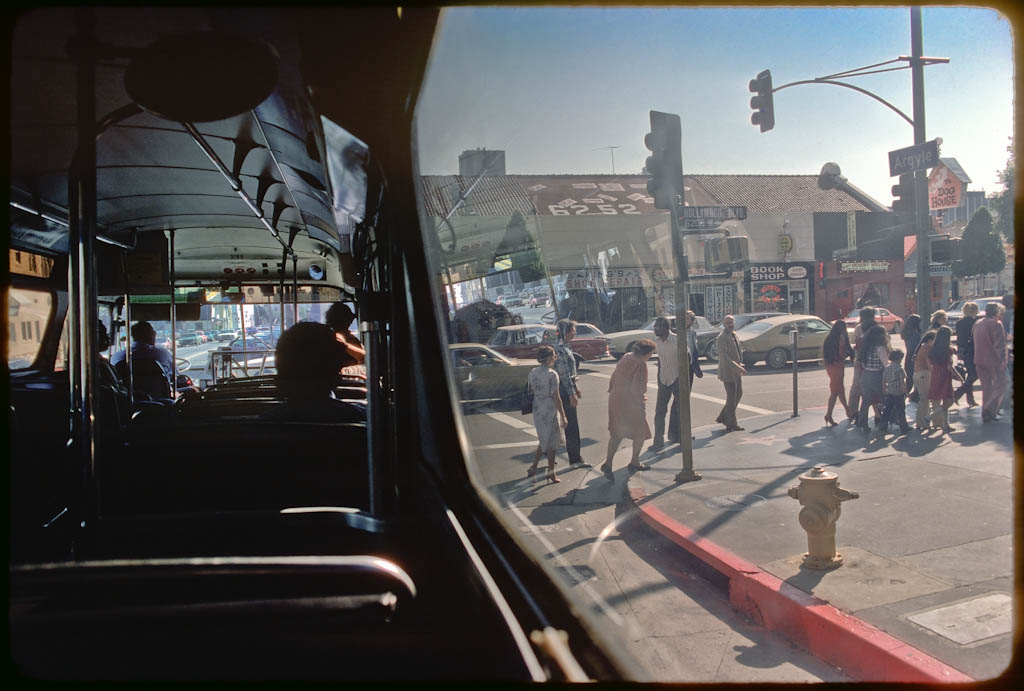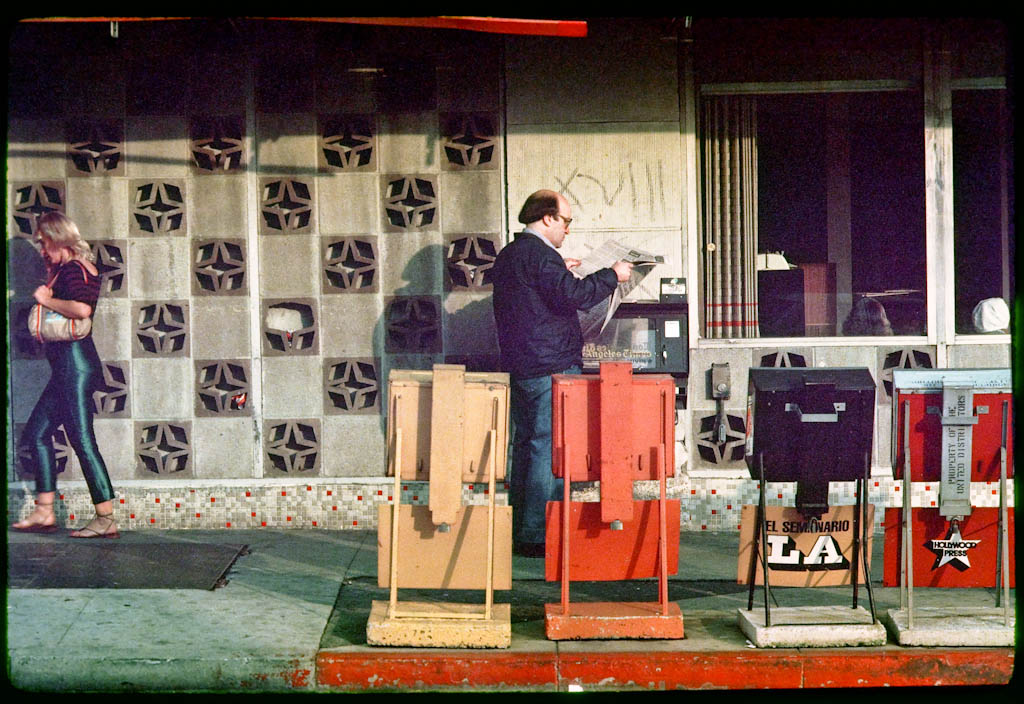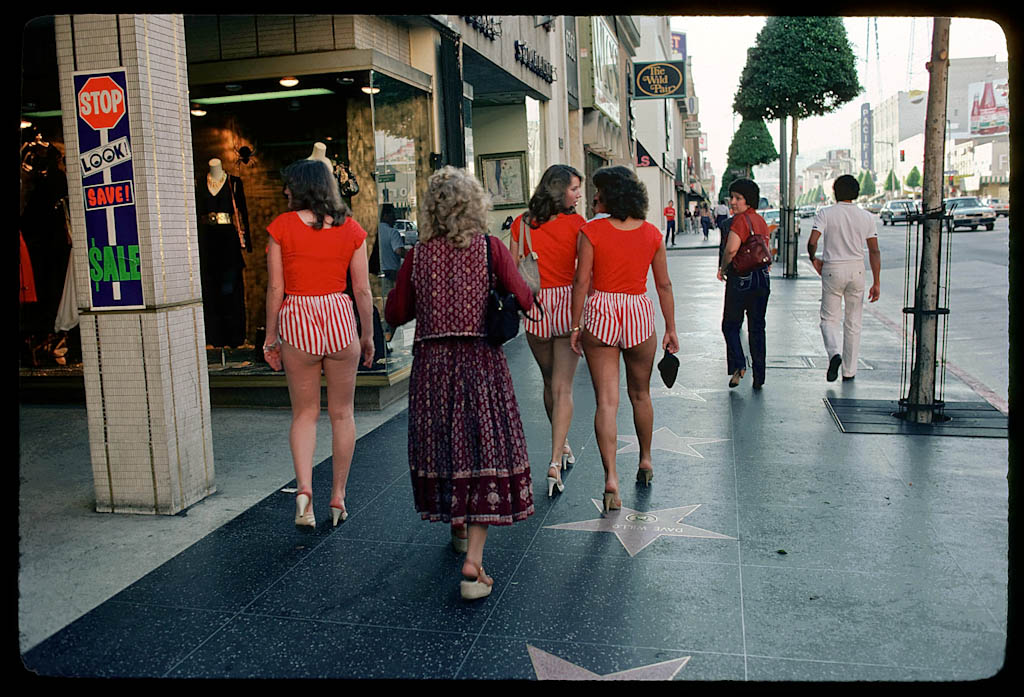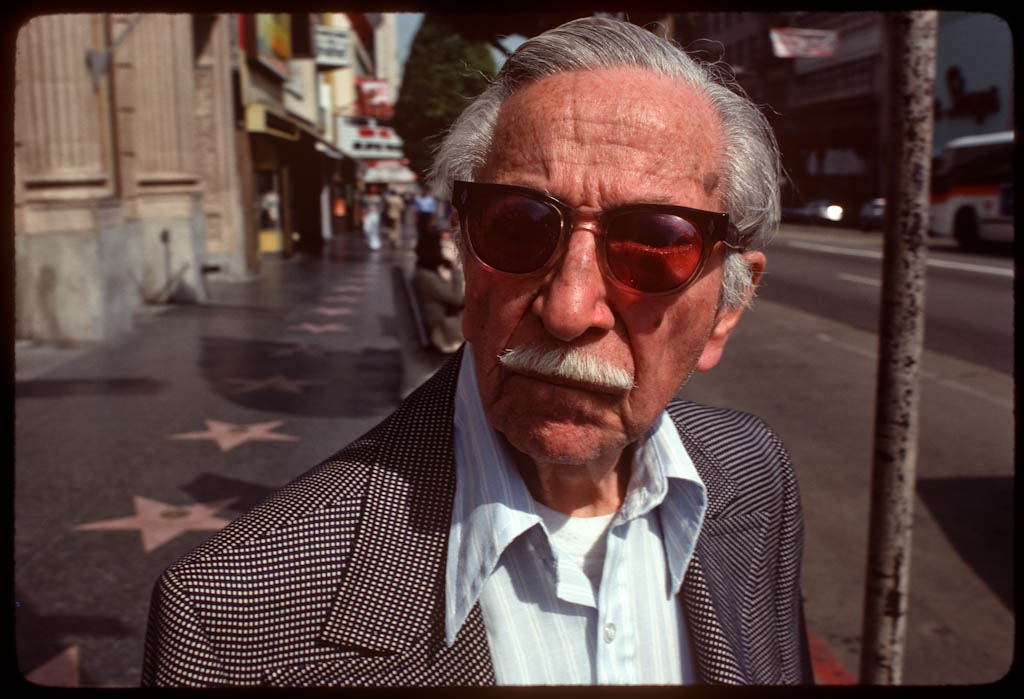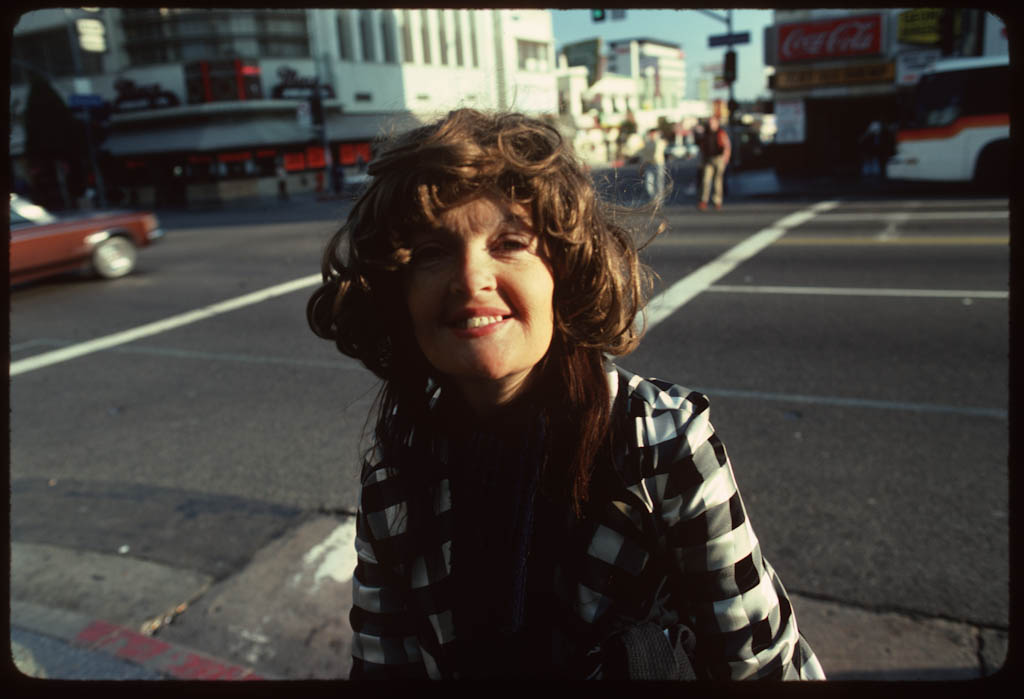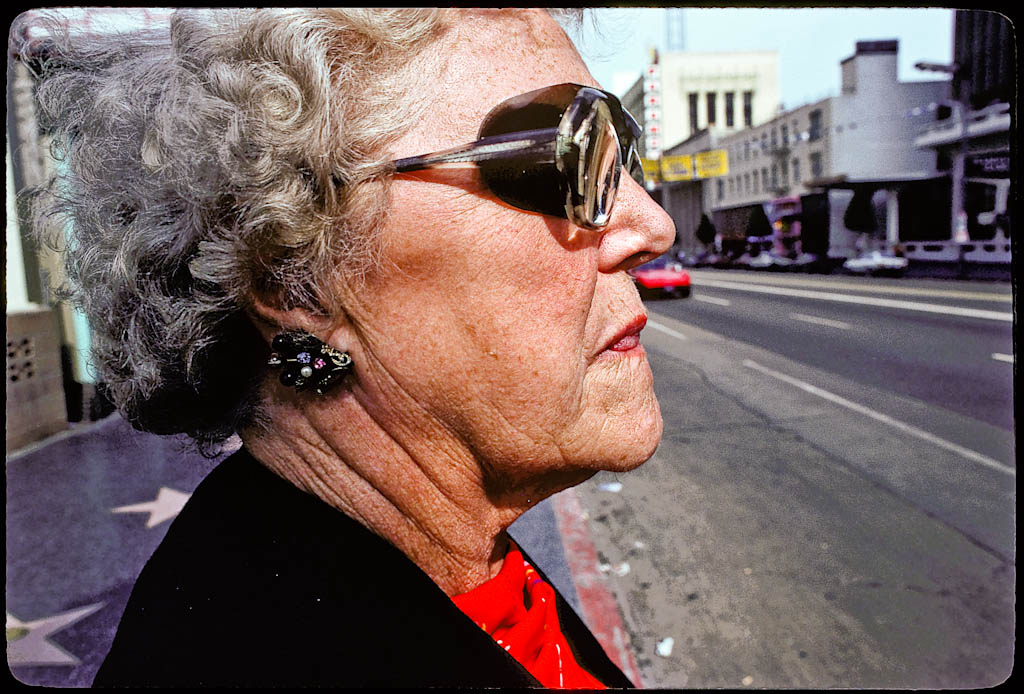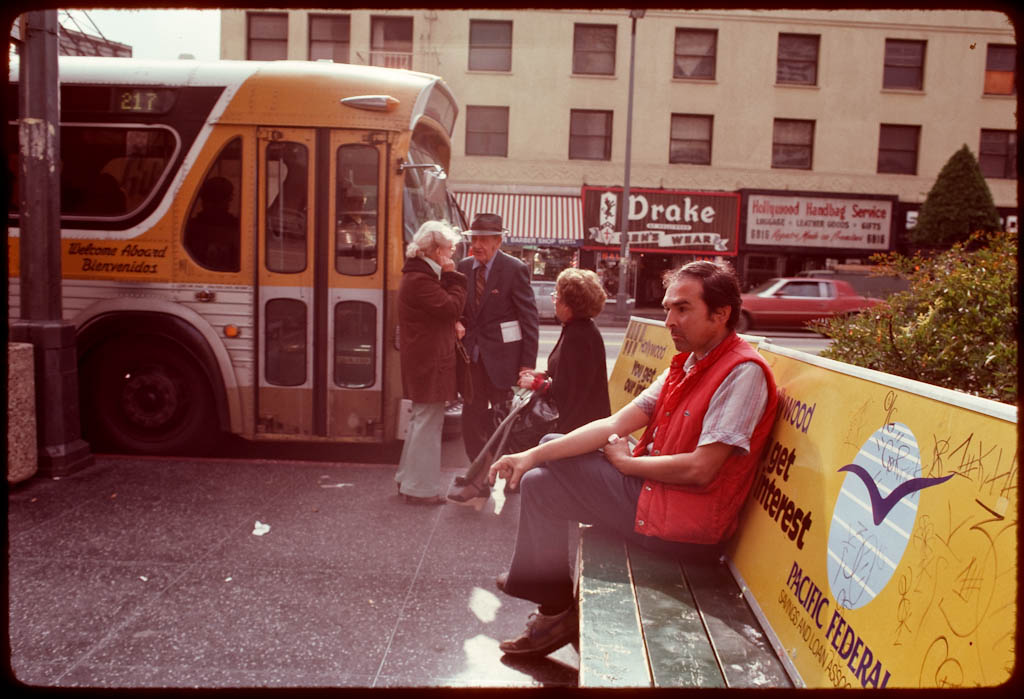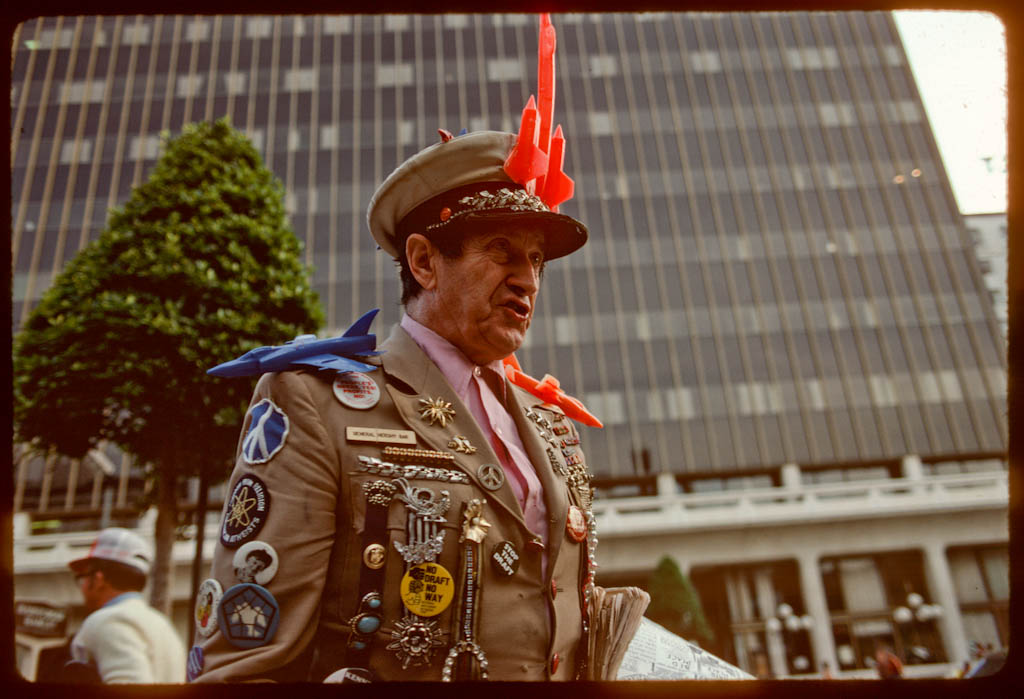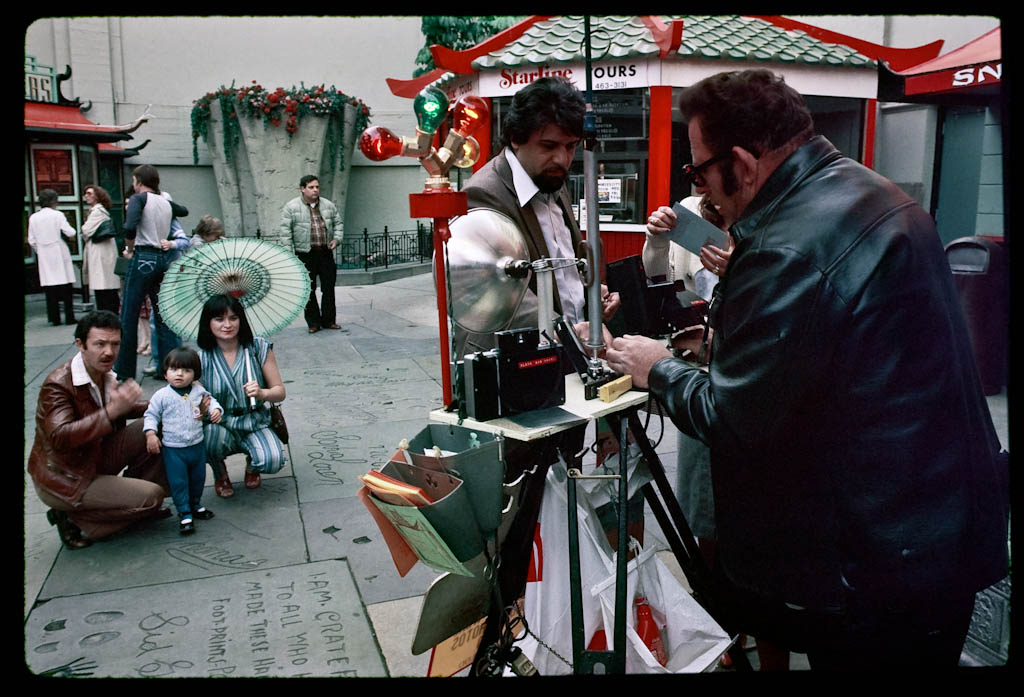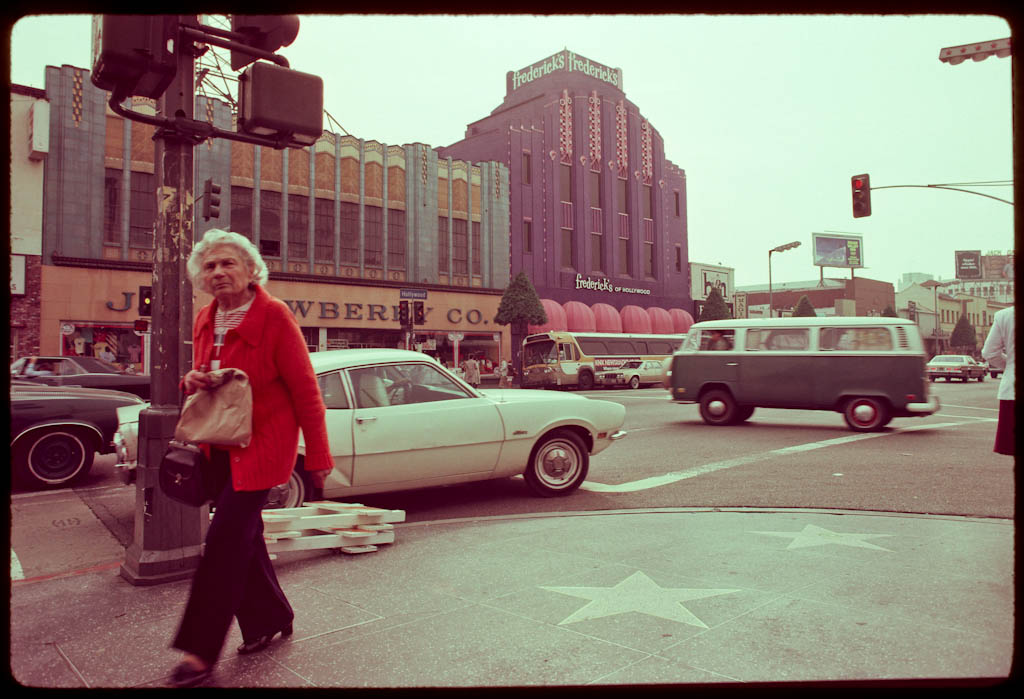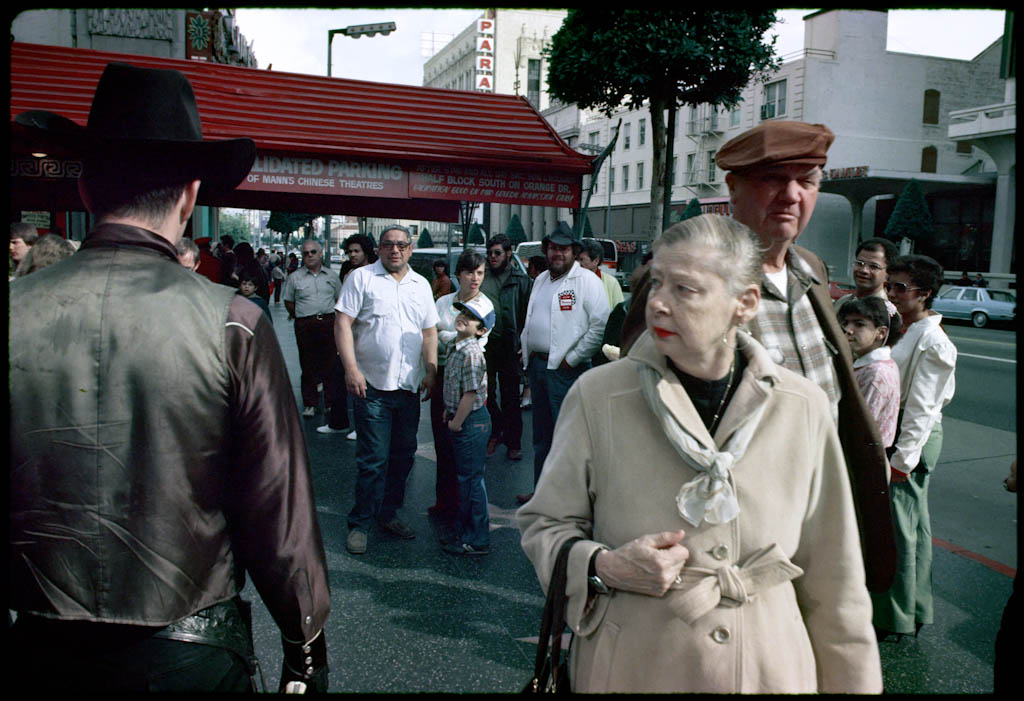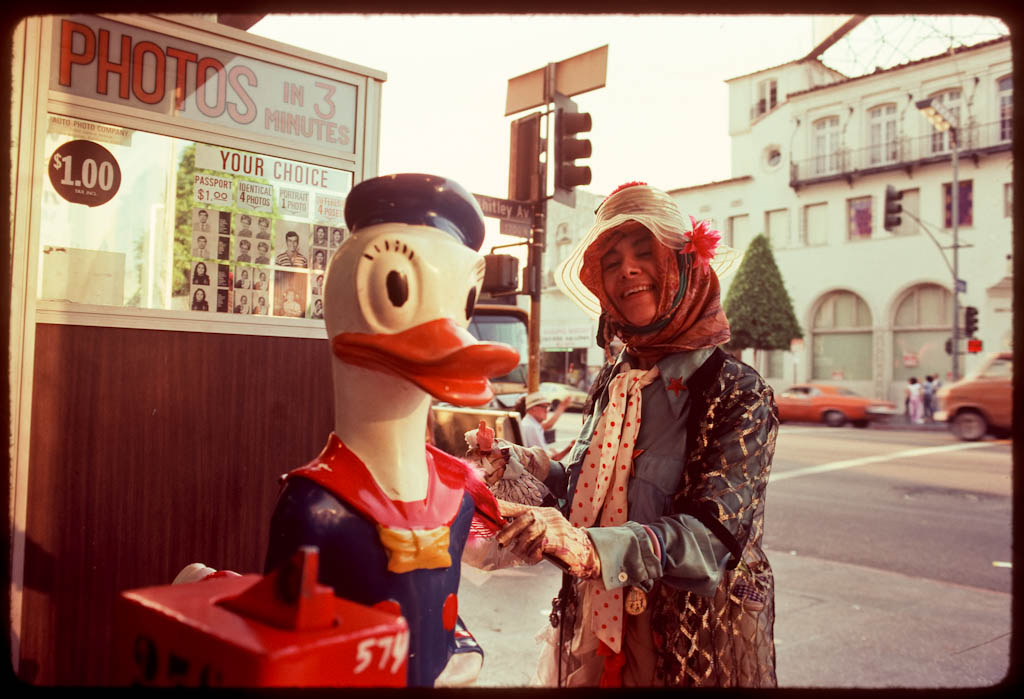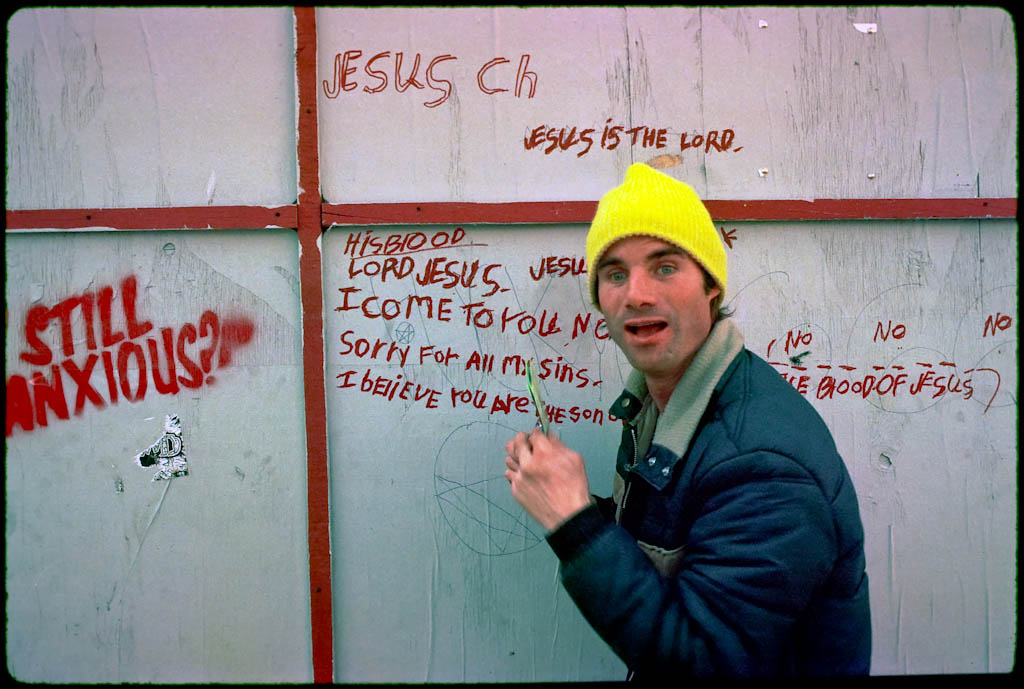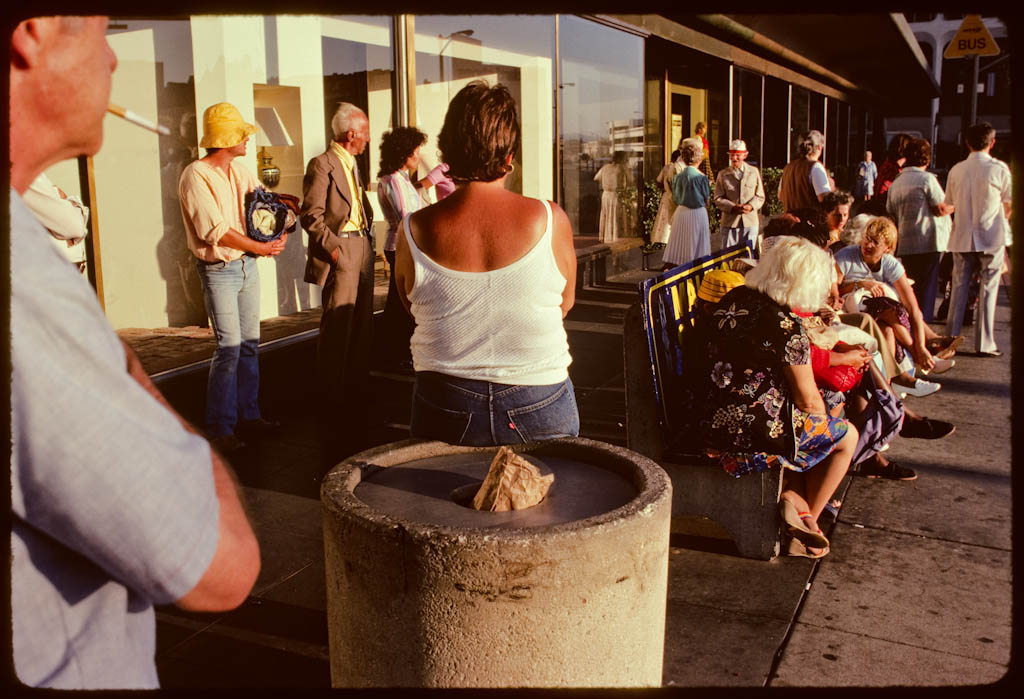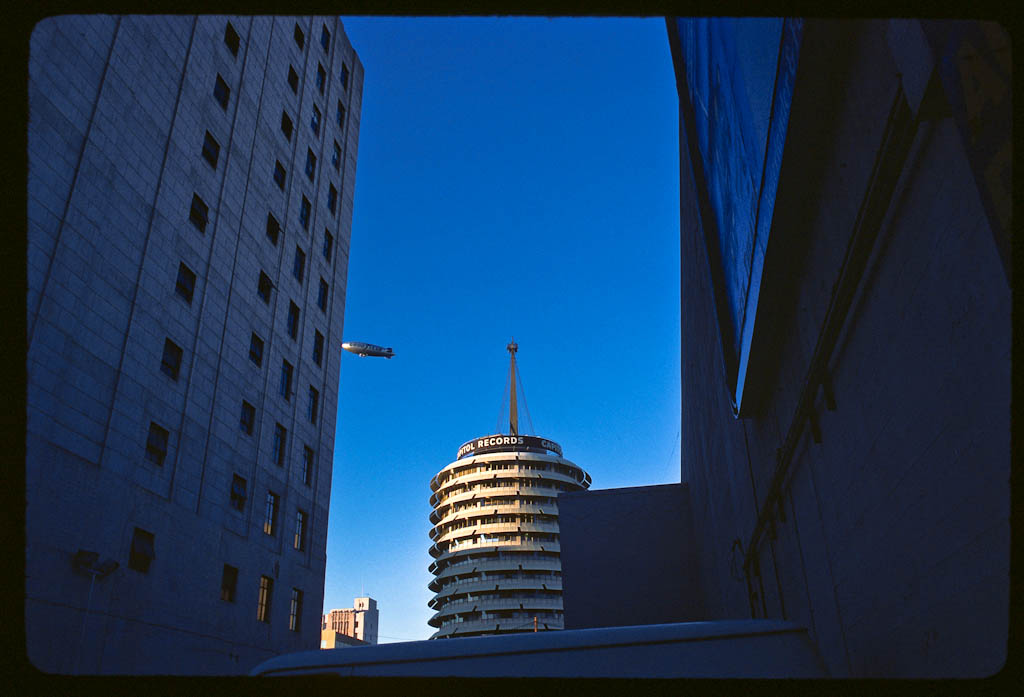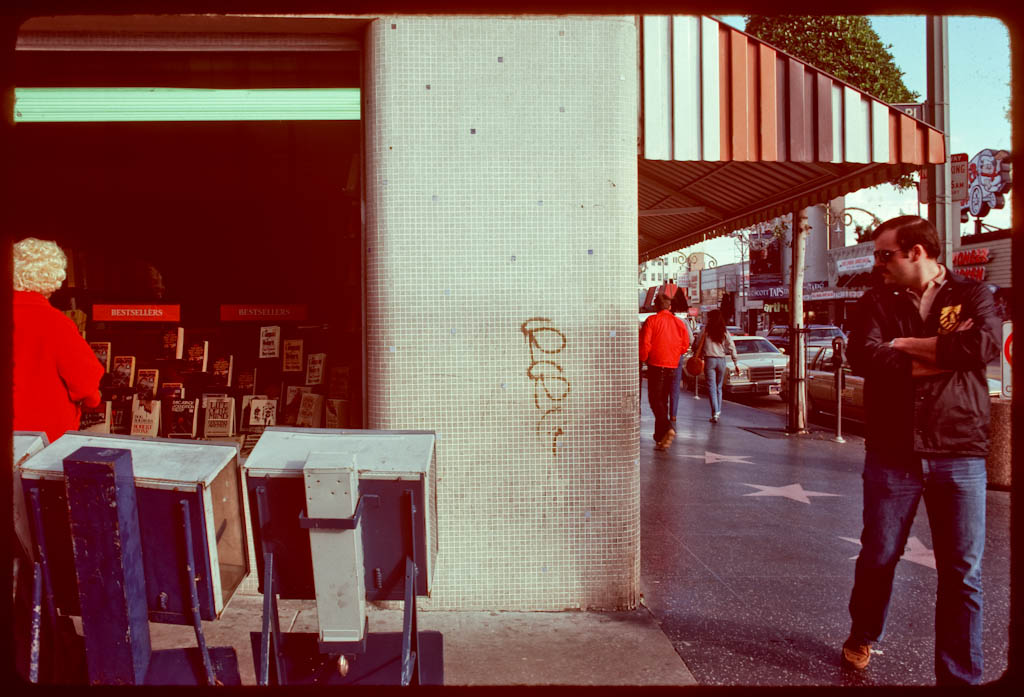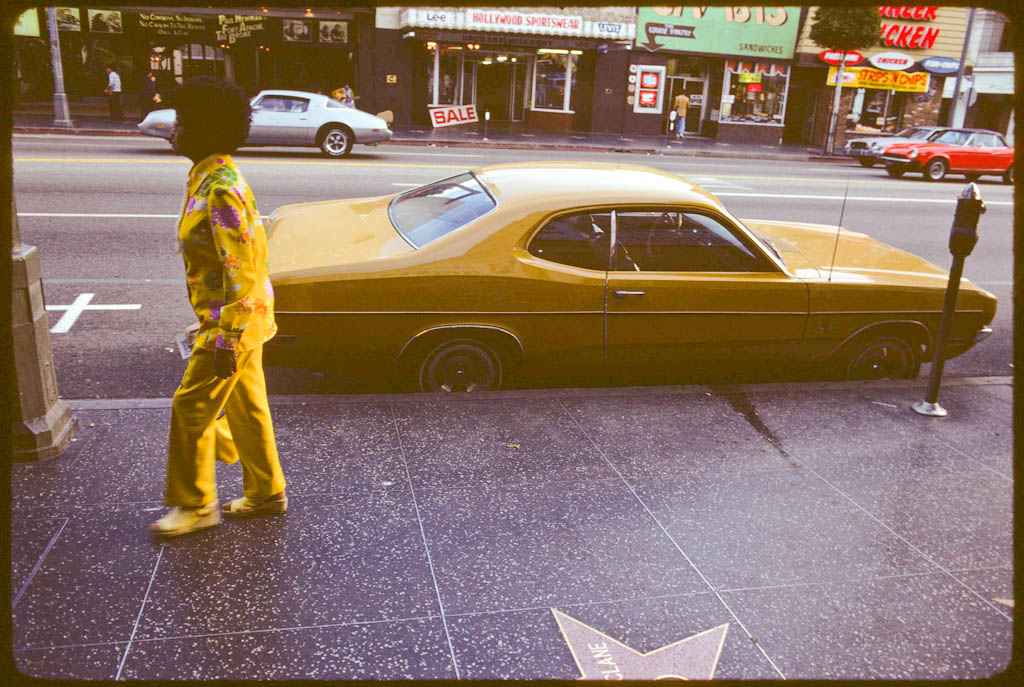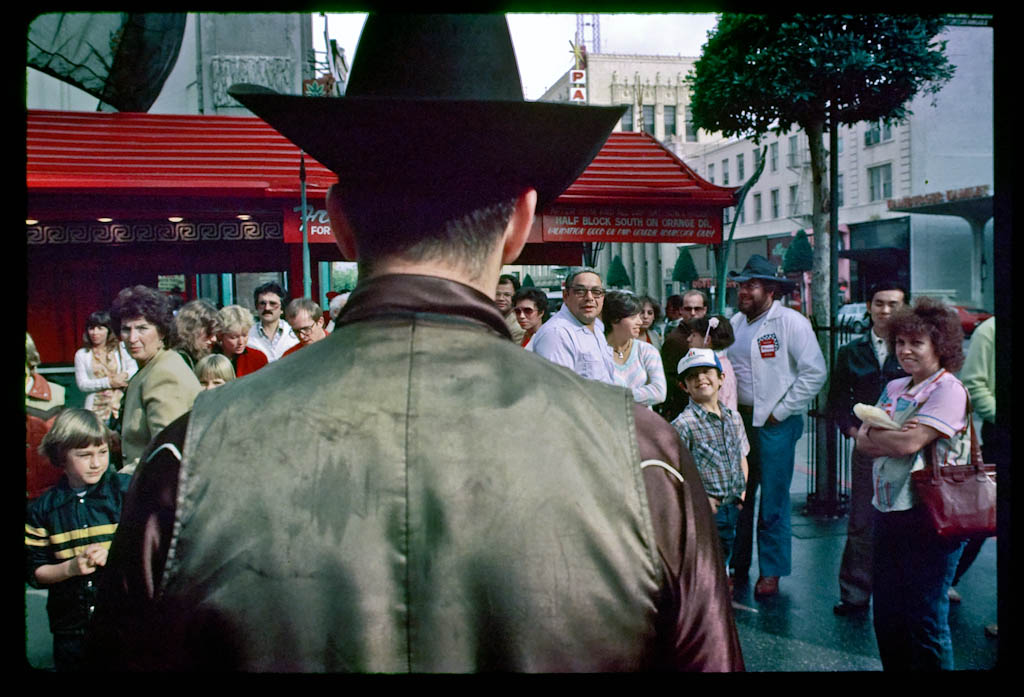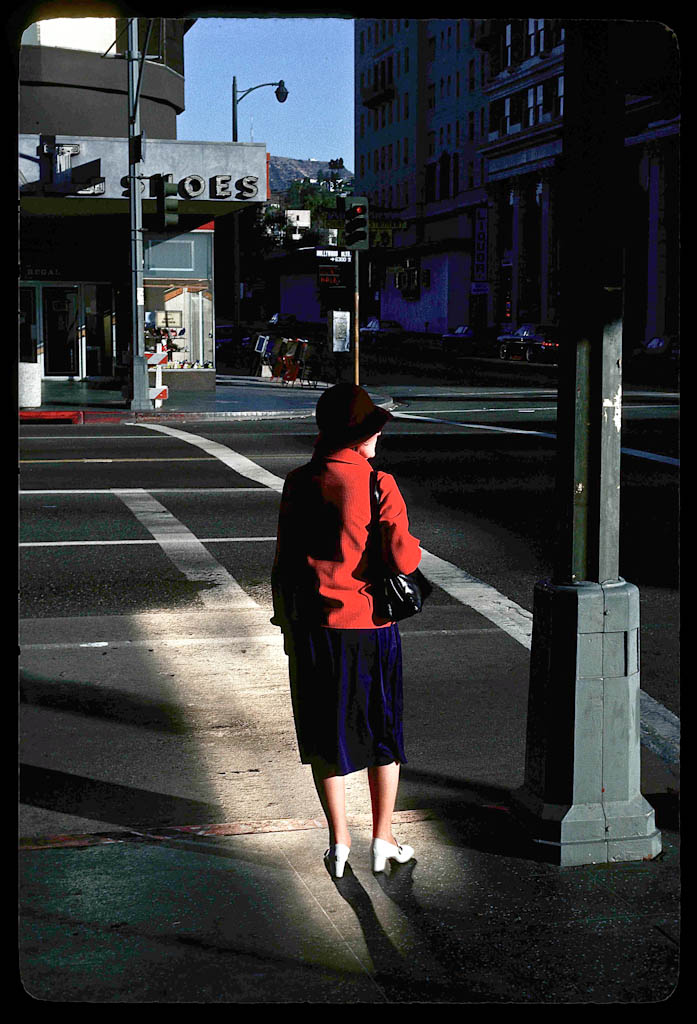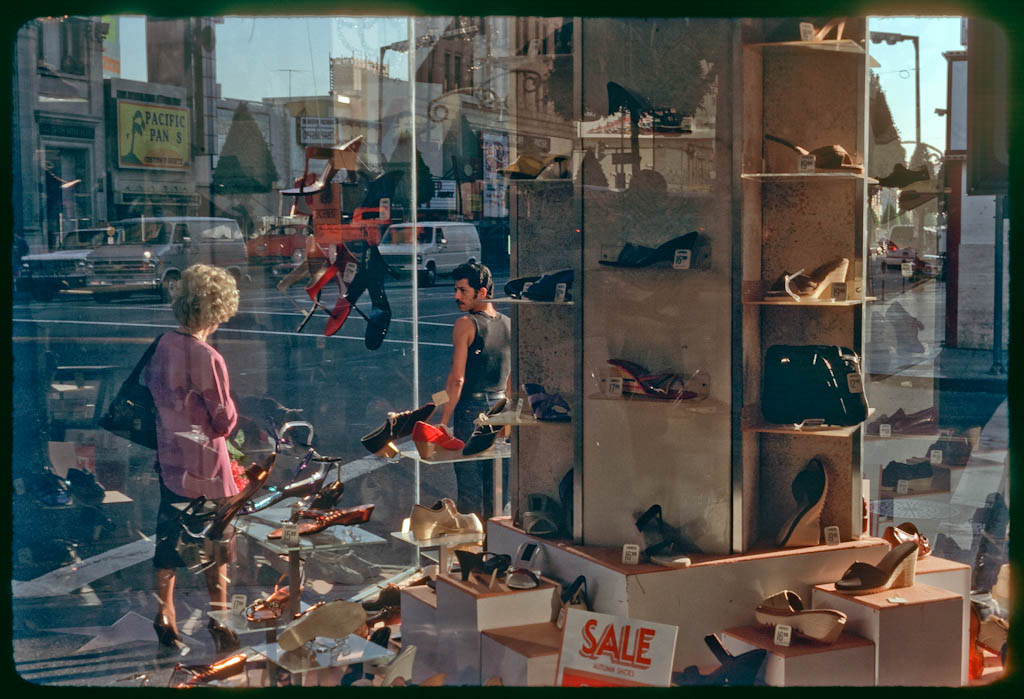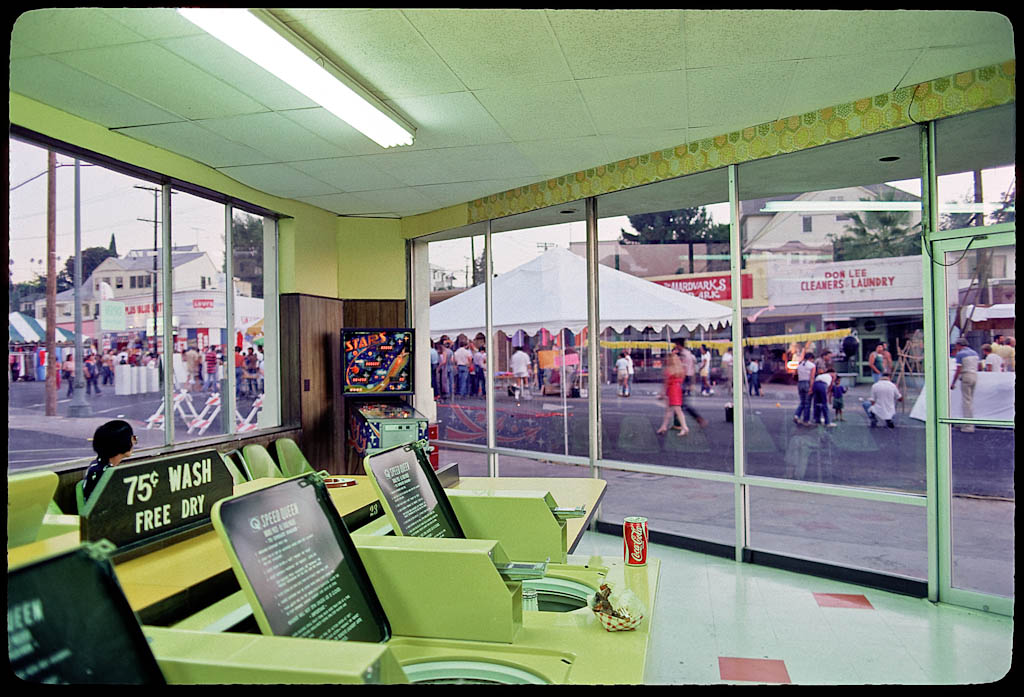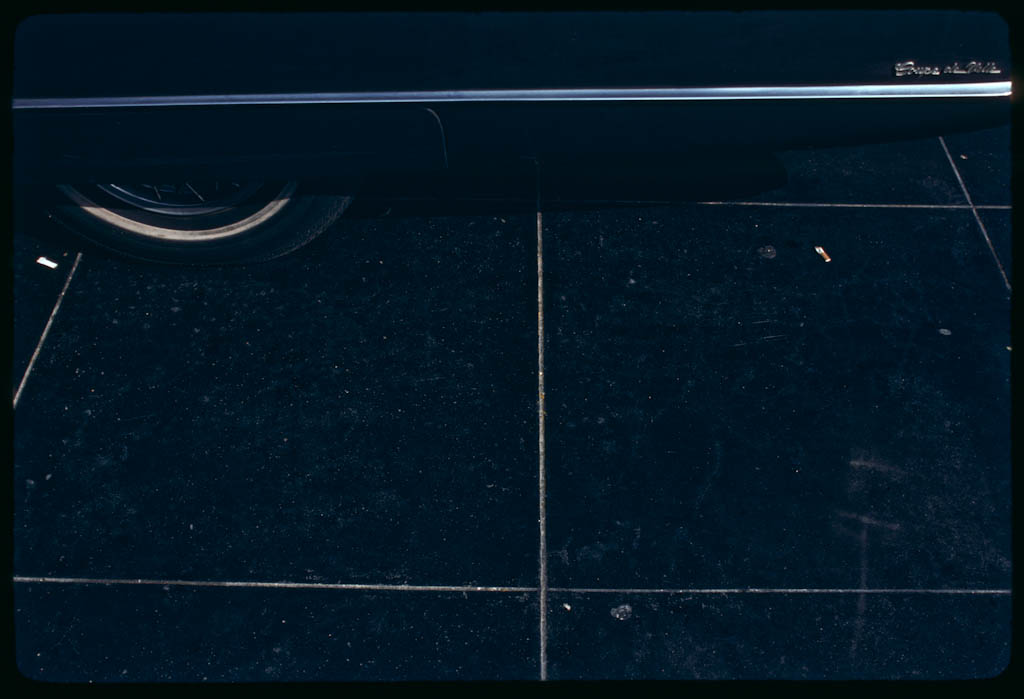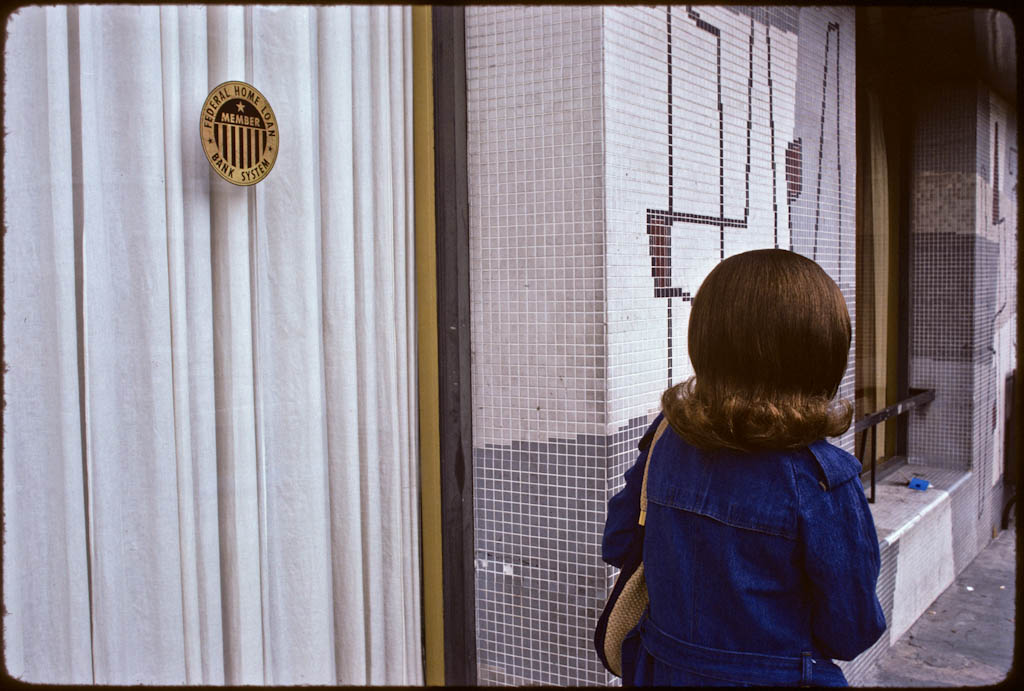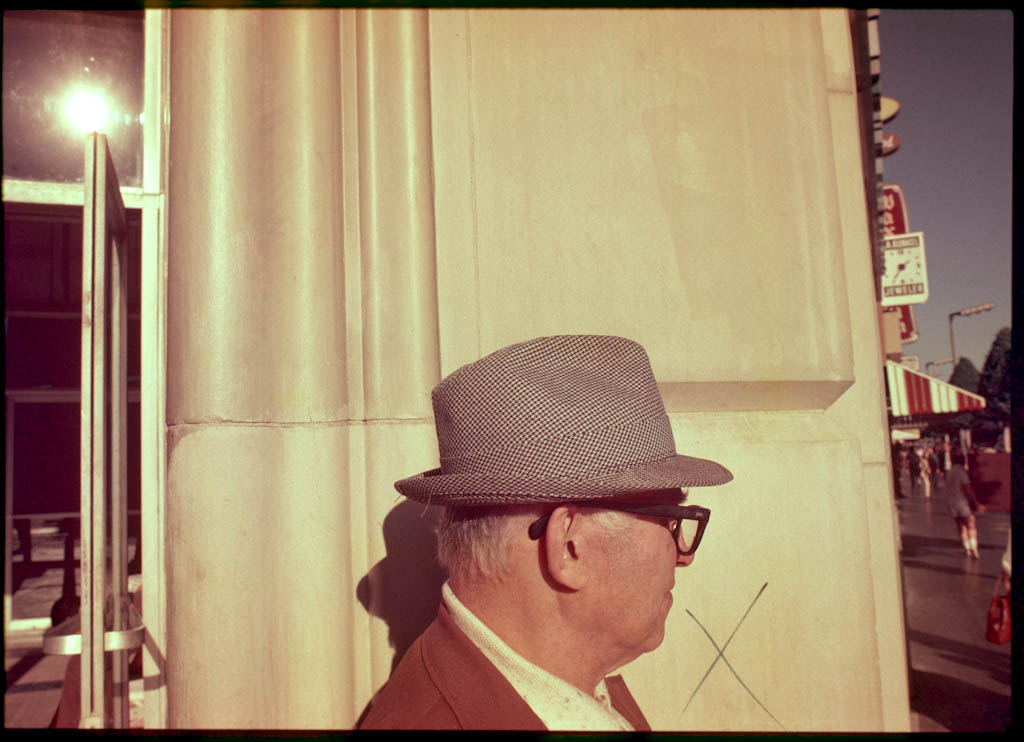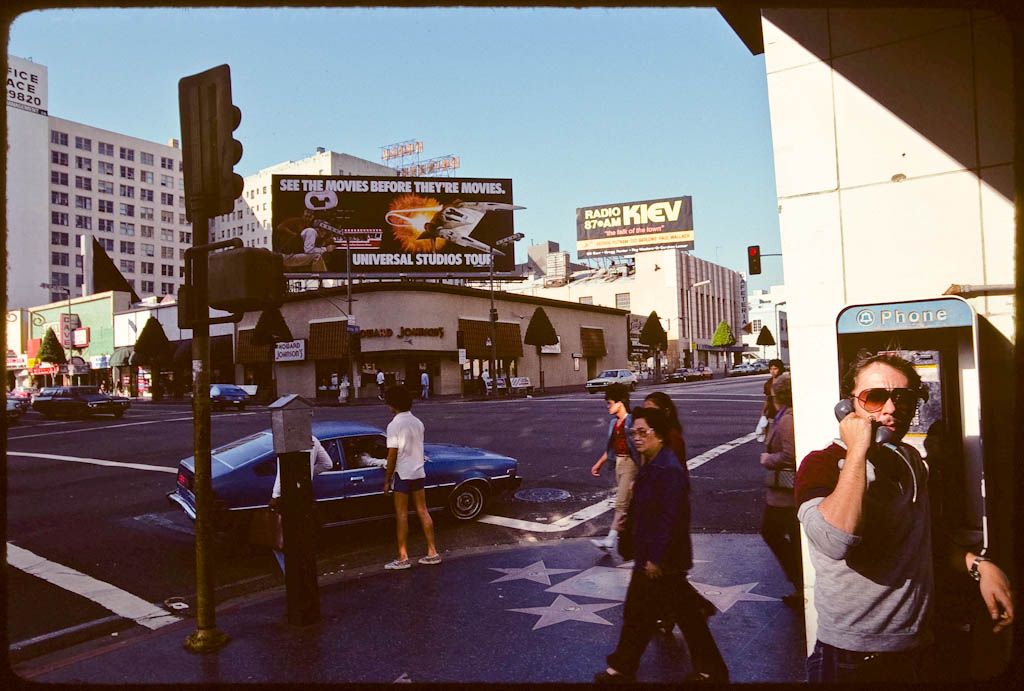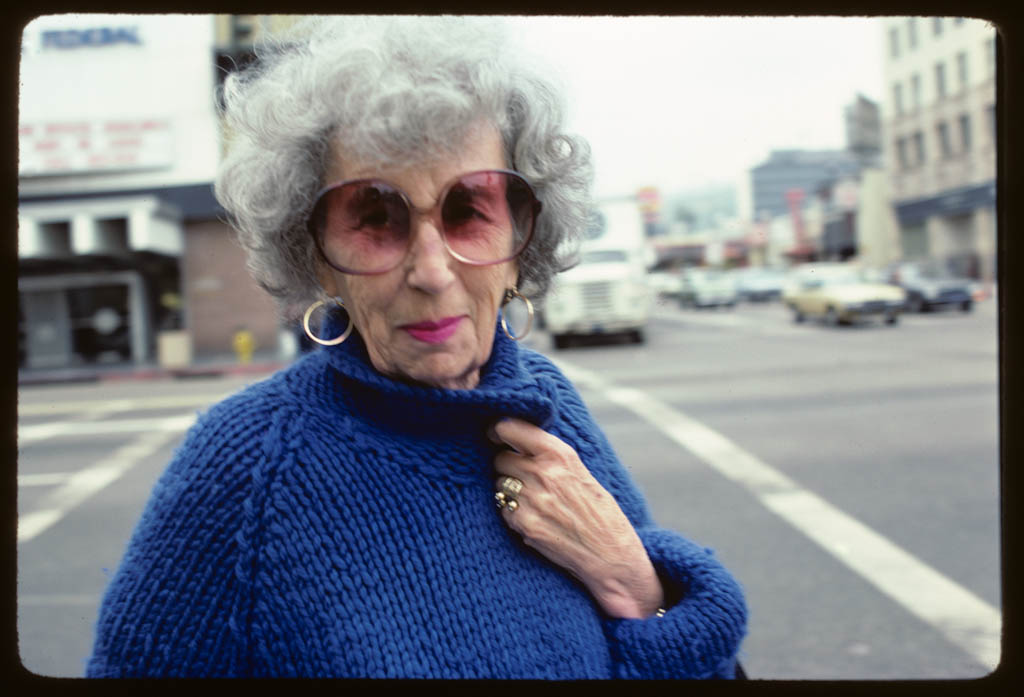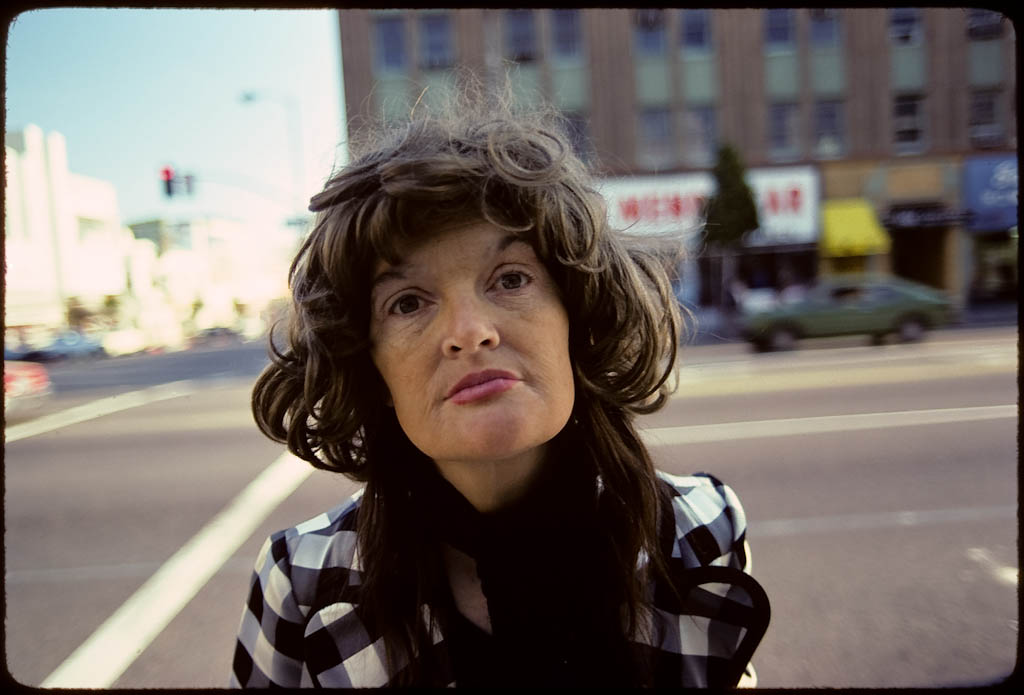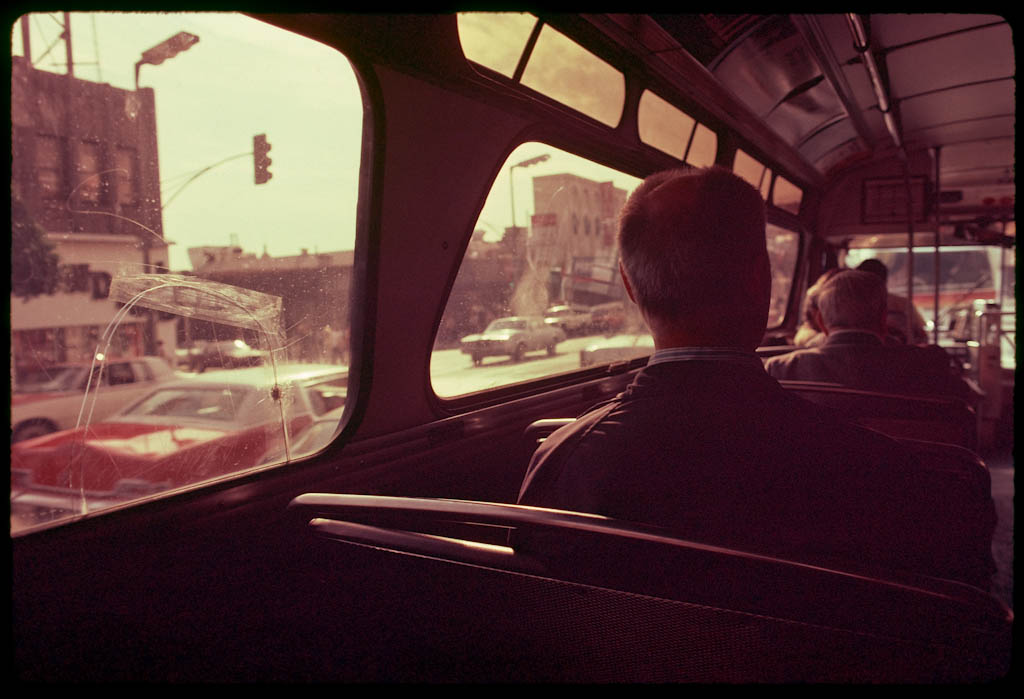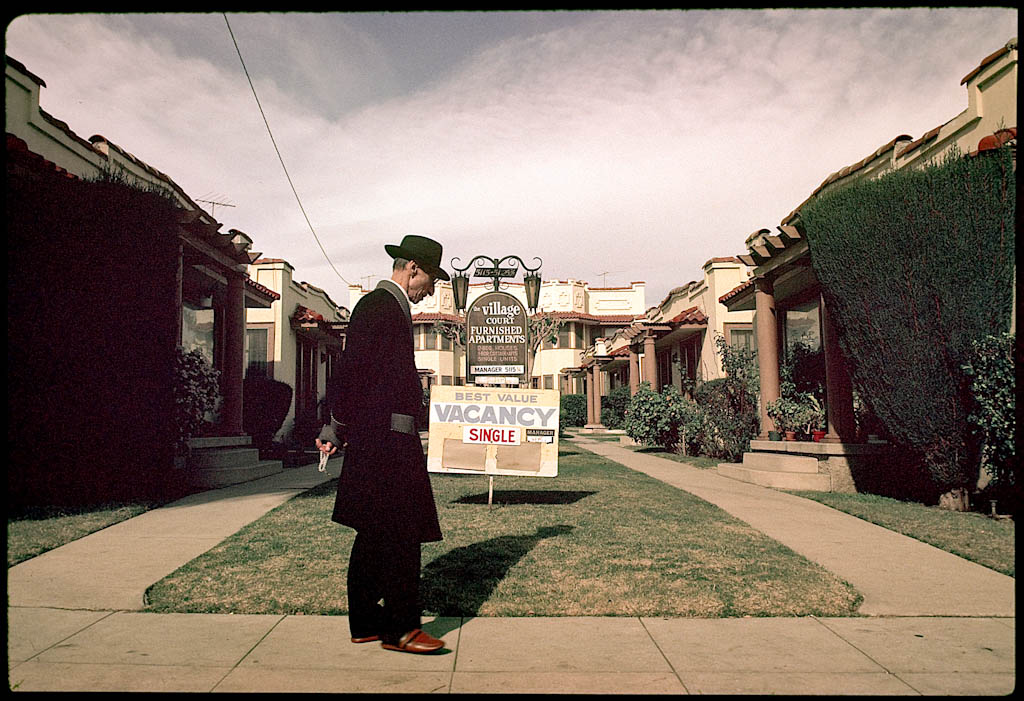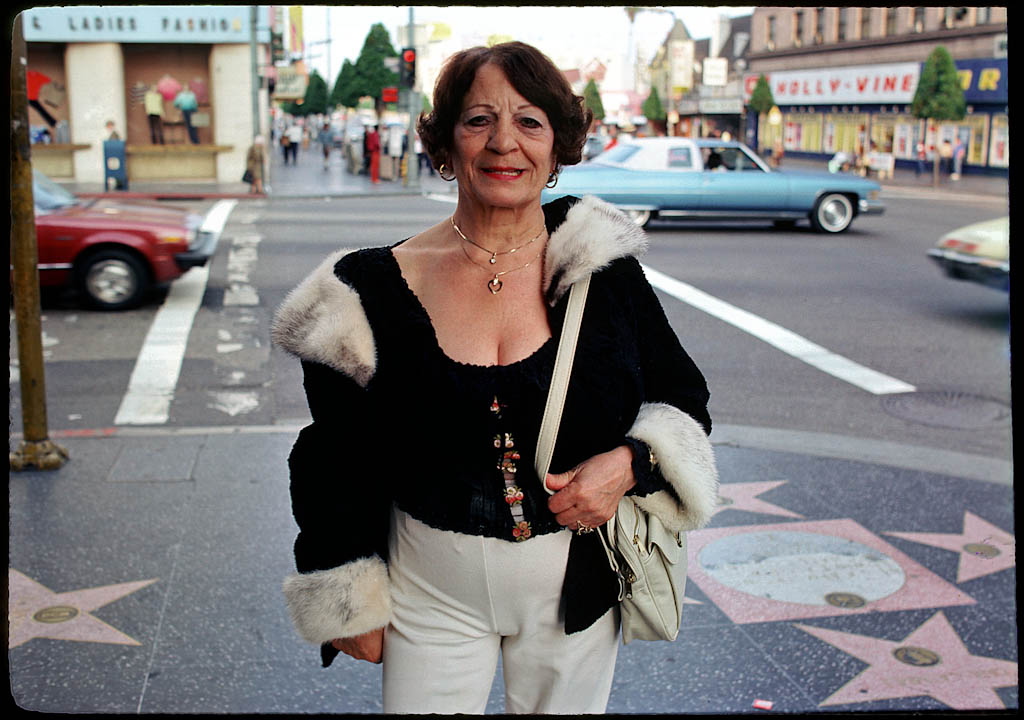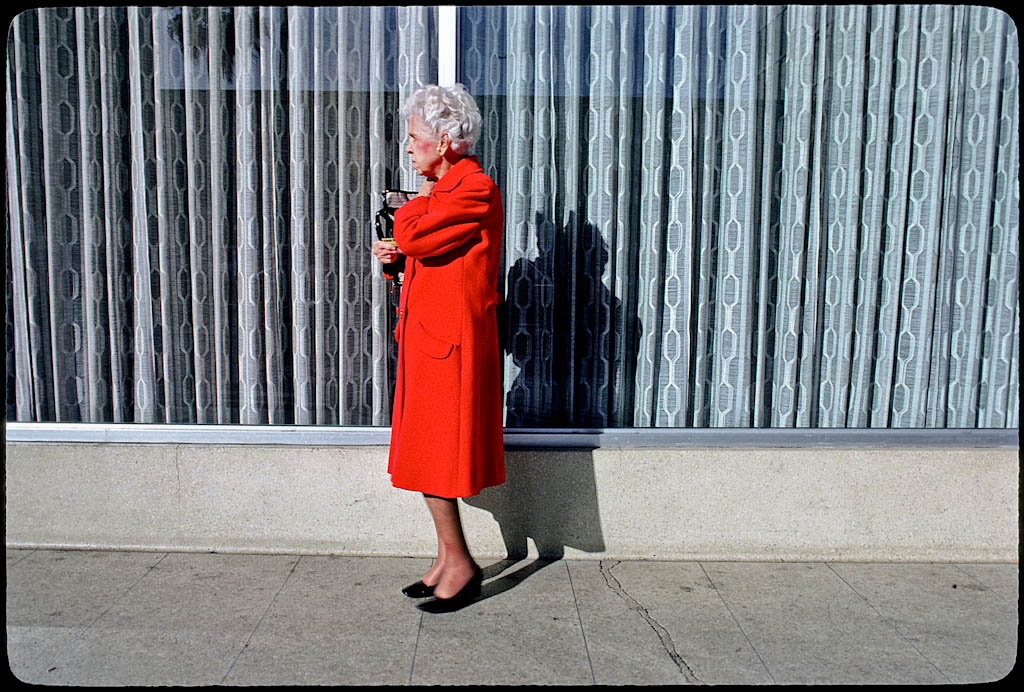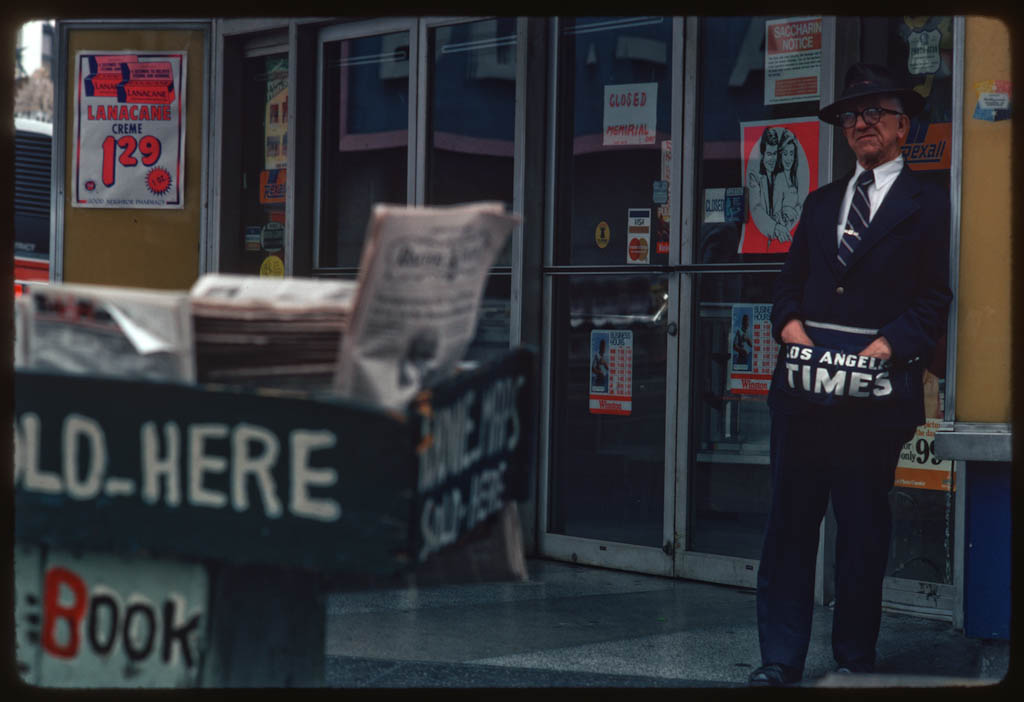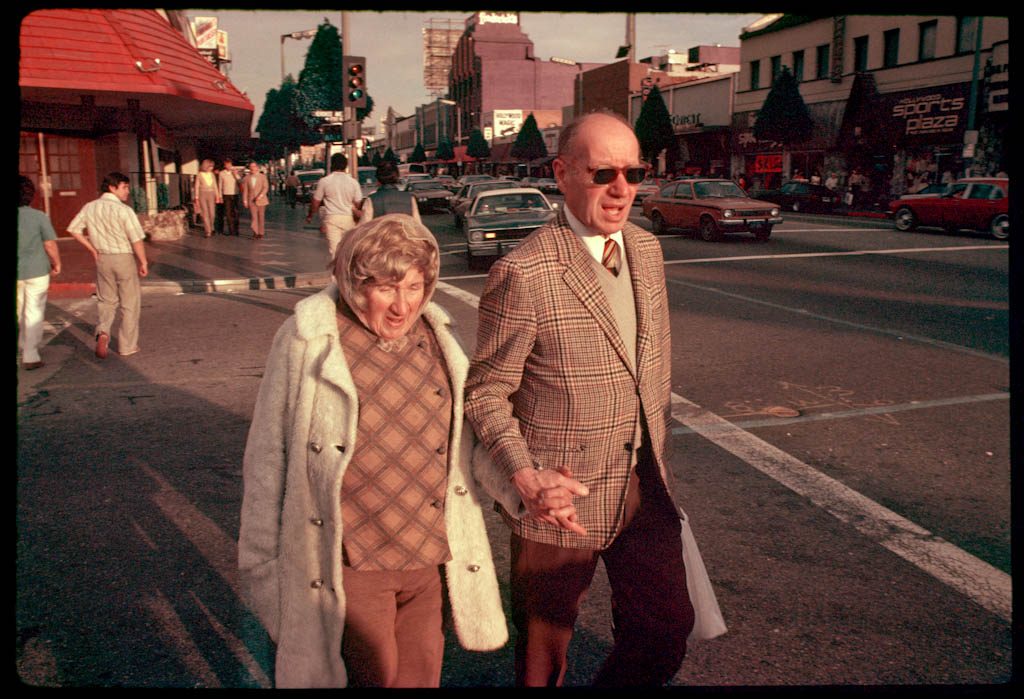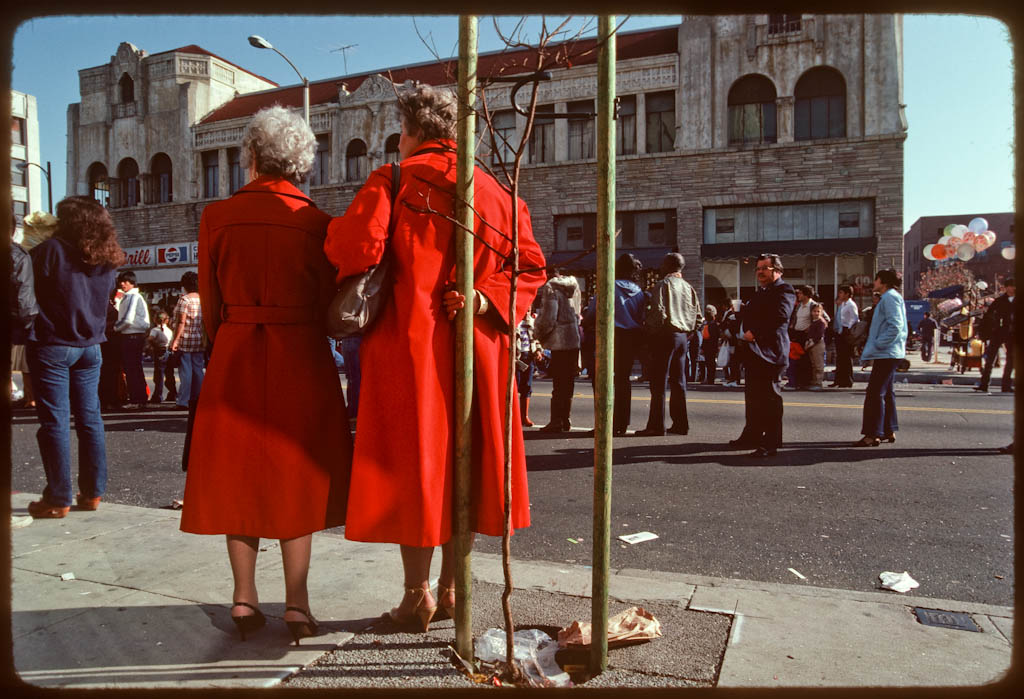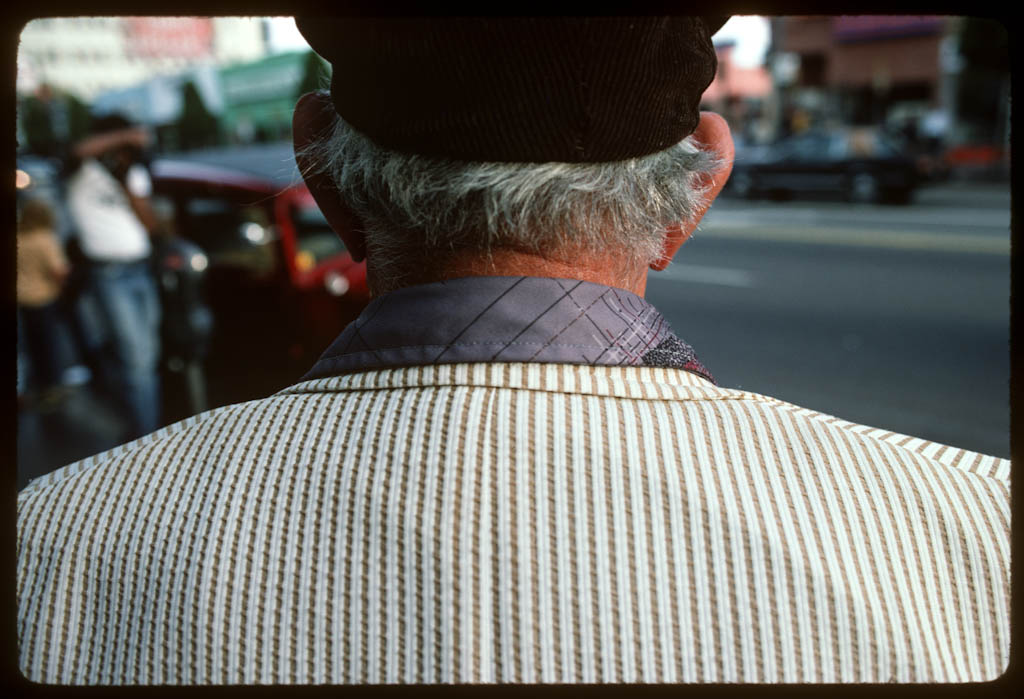This is a collection of photos I shot as a 17-19 year old while living in Hollywood after running away from home in 1979-1982 or so, writes Matt Sweeney. I wanted to be a cinematographer or photographer. This was practice AND my attempt to become a great street photographer. Please enjoy these time machine vignettes.
When I dropped out of High School at 16 to work in a Gas Station, it was with no plan. I knew I loved photography and film. I’d done a fair amount of both already considering the time. It was expensive to have film developed or buy it for a 16 year old. My gas station job was mostly to earn money to buy a camera. I got the best Nikon I could, a black body F2 from the New York Photography Discount houses that advertised in the back of Popular Photography. Until then I had shot mostly B&W with borrowed cameras.
The year book at Junior High had a Pentax Spotmatic that I checked out as much as possible. Prior to that I had set up a basement Dark room with no enlarger and done pinhole photography with solutions that I’d mix up from formulae books. My dad would bring home chemicals to help me from the university.
It didn’t take much to make pinhole cameras and a packet of 25 sheets of paper went pretty far when you cut it up in little pieces. We made all kinds of pinhole cameras from everything from metal cans to cardboard oatmeal boxes. It was a blast to shoot the single frame and then go and tray develop it. That was from 3rd grade to 6th on and off as my interest waxed and waned.
The Junior High yearbook was a chance to play with real film and enlargers and cameras. My teacher Mrs. Barrett let us go unsupervised to the darkroom attached to the gym and we would stay in there long after the school closed. I walked home many nights after dark after 5-6 hours in the darkroom. Then in high school I did the same thing for the school newspaper.
I still didn’t have my own camera so I worked to get one at the local gas station prior to self serve. This was an after school job. Then when I dropped out sophomore year, I went to work full time at the gas station and had my camera pretty quick.
I had applied for Francis Ford Coppola’s film school in San Francisco since I was at loose ends as a High School drop out. I still recall going for an interview in the cool building in North Beach in SF where the Zoetrope office was at the time. Amazingly I got in. Zoetrope decided to move to LA however and they apologized and said try again down there. So my girlfriend applied to UCLA, got in, and we moved to LA.
We drove down in her mother’s station wagon that we borrowed for a whirlwind trip to find a place to l live. After looking at places we couldn’t afford, places that were too full of cockroaches, places with creepy landlords, and nights spent sleeping in the back of the wagon in parking lots, we found one.
Our place was up in the Hollywood Hills, in an in-law shack behind someone’s house in Hollywoodland. A one room place on a hillside it offered a refuge from the bustle of the city. I got a job at Frank’s Highland Park Camera, a west coast discount photo supply store advertising in the back pages of Popular Photo magazine.
The commute was a couple hours each way on the bus. The first bus was a block from home under the Hollywood sign, that took me to Hollywood Boulevard at Hollywood and Vine. The next was to Downtown LA, and then one towards Pasadena and Figueroa where Frank’s was.
I began to bring my camera and shoot when the light was good at Hollywood and Vine. On weekends my Cum Laude chemistry student girlfriend often needed to study and I’d take my camera and shoot my way out to Santa Monica to the beach. Wrapping my camera bag in a towel and burying it while I would swim.
I had no room easilly for a darkroom in my apartment and loved color. I experimented and settled on Kodachrome color slide. I knew it was the most archival and the highest acuity. With mailers I could shoot, drop the film in the mail and it would show up in a week in my mailbox.
I loved the work for Stephen Shore, Elliot Erwit, Minor White, Eggleston, Wyn Bullock, Edward Weston, Diane Arbus, W. Eugene Smith, and especially Cartier-Bresson. Gary Winogrand was a big inspiration along with Lee Friedlander and Joel Meyerowitz.
I thought I would do Winogrand but in Kodachrome. Shooting Tri-X on the street is fairly easy in daylight exposurewise. Kodachrome25 is really difficult in shade and late in the day. I settled largely on Kodachrome 64 which was still difficult in golden hour shade conditions. Exposure choices were limited by the need to avoid camera shake or subject movement. It was not always possible to have the ideal depth of field selection for aperture.
Speaking of Winogrand, I ran into him on the street shooting in Hollywood one day. He took at look at my Nikon SLR with a wide angle and ‘harumphed’ at me. I smiled and nodded. It was rare to run into others stalking the street up and down then. Almost nobody with a photo vest and a Leica.
I was a bit shy about shooting in the street. Use of wide angles requires one to get close. It took lots of trial and error but I worked to get the style seen in my work at the time, mostly shot with a wide. It was a gradual process over the years as I developed my technique. The shear cost of film limited how much I could shoot and as I was barely making food, rent and bus fare at the time. No medical or dental.
One unifying theme is clearly Hollywood Boulevard. Another one might notice is that since I was taking the bus and without a car in Los Angeles, most of the images are of bus stop activity or buses.
I have been scanning my archive of Kodachromes. I recently (2015) found about 100+ rolls of B&W negative I shot back in the late 70s-early80s. I developed a load of them at Rayko Photo SF in the community dark room facilities before they reduced programs in the spring of 2017. Used Rodinal and they most all came out after 35 years.
Thanks for looking. Matt Sweeney-Mudstonephoto
I post most of my work to my Tumblr, and have a website at www.mudstonephoto.com
Would you like to support Flashbak?
Please consider making a donation to our site. We don't want to rely on ads to bring you the best of visual culture. You can also support us by signing up to our Mailing List. And you can also follow us on Facebook, Instagram and Twitter. For great art and culture delivered to your door, visit our shop.

